The rural renaissance of Madrid’s Sierra Norte
While many villages across Spain are turning into ghost towns as depopulation bites hard, the mountainous areas north of the capital are enjoying a demographic boom
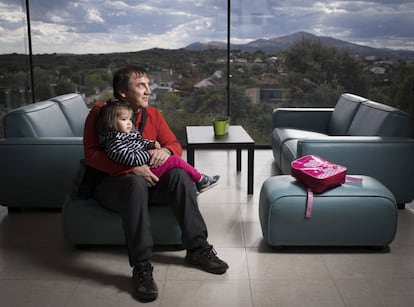
Venturada and El Vellón are small towns in Madrid’s Sierra Norte. For many years they were too tiny to have their own soccer team, and any youngsters wanting to compete in the regional leagues had to head to neighboring towns. This is a familiar story in rural Spain. Now, however, Venturada and El Vellón appear on the league table in their own right.
For the past five years, the Vellón Venturada Sports Union has managed to produce a team for every category, from the age of just three to seniors. Players from both towns meet for training sessions in El Vellón, which offers an artificial-grass pitch and spectacular views of the mountains. Play is accompanied by the pastoral sounds of cows lowing and dogs barking as they return with the local shepherd from the countryside that surrounds this town of 1,834 inhabitants, 400 of whom are 18 or under.
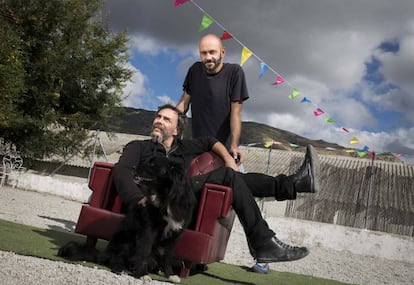
“When I was small, we couldn’t have dreamed of having a federated team in this town,” says trainer Guillermo Sánchez, 22, who is pleased with the progress his players are making in the region’s leagues. “Now these children have their families to accompany them on their soccer journey.”
The demographic boom of these and other towns in this mountainous region contrasts with the rest of what is being labeled “empty Spain.” More than 4,000 towns and villages are at risk of becoming totally deserted and many have scarcely enough children to keep their schools open. Meanwhile, these small towns in Madrid’s Sierra Norte have performed a U-turn and are opening both schools and sports centers at an impressive rate.
These small towns in Madrid’s Sierra Norte have performed a U-turn and are opening both schools and sports centers at an impressive rate
In the last 20 years, 42 towns in the Sierra Norte have gone from 17,500 to 26,000 inhabitants, a leap that has breathed new life into what has long been referred to as the Sierra Pobre – or the Sierra of the Poor. With income per capita around 30% lower than in the rest of the Madrid region, the Sierra Norte is one of the poorest regions in the EU. For decades the inhabitants here watched growth pass them by.
Part of the recent regeneration is due to Madrid’s metropolitan area pushing outwards. Although a dozen or so villages remain in a funk, the ones that are better connected are finally getting a taste of prosperity. Those little more than a 30-minute drive on traffic-free roads from Madrid’s Plaza Castilla are now home to Madrileños who are fleeing the impossible property prices in the center. Of the 42 towns in the area, 23 have grown in the last 10 years. And some can now boast a younger demographic than Madrid: while 23% of the population in Venturada is 18 or under, this is true of only 17% of Madrid.
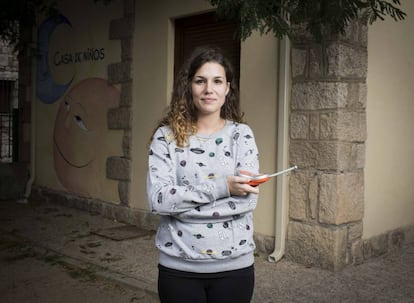
According to Pedro Reques, a geographer at the University of Cantabria, if the pace of growth continues, these towns will likely have doubled their populations in less than 20 years. But this estimate could prove conservative with regard to the potential impact of the multi-million-euro urban regeneration scheme, Madrid Nuevo Norte, which was approved in September and which involves the building of 10,500 new homes and a 100-hectare business park north of the Paseo de la Castellana boulevard.
Another stimulus could be the arrival of fiber-optic internet, which has just begun to make working from home an option, thus revolutionizing people’s lives.
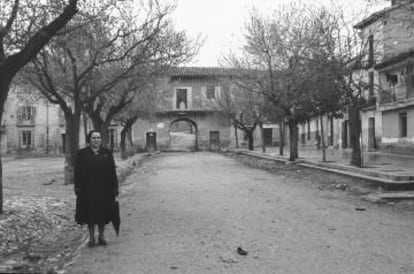
“These days, it’s the main topic of conversation,” says Jaime Leonor, 38, who works in pharmaceuticals and expects to reap the benefits of a fast connection in the next couple of weeks. “People are counting the days until they get fiber optic installed in their own homes. It’s going to change the area.”
Jesús Fuente, a 46-year-old computer scientist and father of two, is among those who will take advantage of the transformation by working from Venturada at least one day a week. “The connection I had before was less stable and it was really complicated to hold videoconference meetings, something that will no longer be a problem,” he says.
As far as Jesús is concerned, the pros of living in Venturada in an affordable house with its own garden far outweigh the cons, such as being 50 kilometers away from Madrid. “Property is worth three times less here than in Madrid,” he says.
The high-speed internet connection is one of the most attractive measures in a package worth €130 million aimed at reviving rural Madrid. Other measures include subsidies for businesses and a minibus service for ferrying children to and from extra-curricular activities.
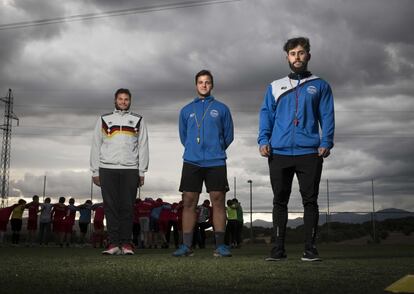
The measures could be the salvation of some of the smaller towns in the area that are in danger of emptying out altogether. In the school in Montejo de la Sierra, a village of 356 inhabitants, there are only two children left, according to Eva María Gallego, the mayor of Madarcos, a neighboring hamlet that has just 46 inhabitants. “Young people need to feel that living in a village is not a drag,” she says.
But it is, of course, the towns and villages lucky enough to be close to the A-1 highway that are first to reap the benefits of this new dawn. “We’re doing great!” exclaims the mayor of Torremocha del Jarama, Carlos Rivera, who greets each inhabitant with a handshake as he strolls around the town, and describes how it has changed since he took the reins here in the first democratic elections in 1979.
Back then, there were just 141 inhabitants, who lived in a clutch of houses around the church, the school, the laundry and the town hall. Today, Torremocha has a population of 1,015, a sports center with a swimming pool and tennis courts, a music school with 80 young students and a business center that is used by 25 craft and food entrepreneurs.
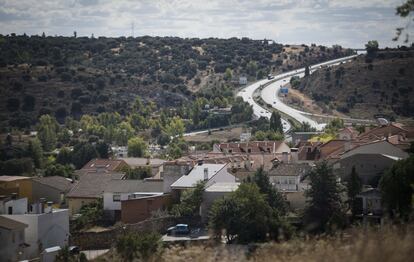
When he meets mayors from other parts of rural Spain, Rivera has a job convincing them of Torremocha’s success. “I tell them they need to be optimistic,” he says. “You have to inspire the inhabitants so that they stay and invest in the town.”
While reviving towns that are far from big cities is more complicated, the solution, says Reques, lies in finding a formula to make them productive – as has happened in Almeria with greenhouses growing fresh produce. “It’s difficult to draw conclusions from the Sierra Norte because the rural area here is complex and varied,” he says.
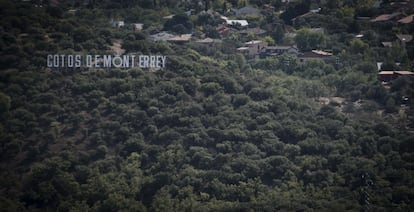
In fact, development in the Sierra Norte has not been as simple as in other outlying areas of Madrid where train and metro lines have been installed and new developments have sprung up. The area is protected and construction controlled as it has seven of the reservoirs that supply Madrid with water. “Growth will depend on which needs are put forward, but the environment will have to be respected,” says Rafael García, the regional commission for the Revival of Rural Municipalities.
Naturally, there are a number of mayors who would like to see these controls relaxed. “If the town is strait-jacketed, it will end up dying,” says El Vellón’s mayor, José García Vela. The general feeling is that the colonization of this area will be slow but steady.
For the “neo-rurals” – those newly arrived from the city – anything that conserves the rustic character of their new home is good news. Brought up in the capital, they are seeking a more sustainable lifestyle and a greater sense of community than can usually be found in cities or dormitory towns close to them. Some have discovered the area on a weekend getaway, and are captivated by the sense of freedom that no longer exists in the center. “Our generation grew up in neighborhoods of Madrid where you could play in the street until midnight, but you don’t see that anymore,” says Mariano Rabadán, 46, who lives in Bustarviejo, a town of 2,400, with his 10-year-old son. “In a town like this, you can build a community more easily.”
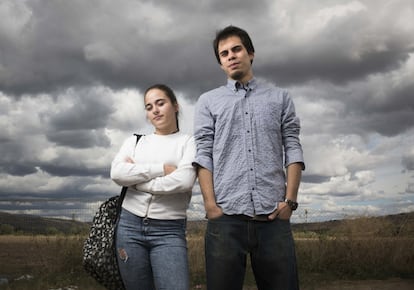
Along with four others who have also moved from Madrid, Rabadán runs La Nave Indeleble, an artists’ cooperative which has a workshop and gallery, and almost 1,500 members.
The fact that they can still enjoy the kind of culture they enjoyed back in the city while having services at hand is a definite plus for the neo-rurals. “We have given up things from the city but there are other things that we need,” says Beatriz Pérez, 39, who owns the craft beer cooperative along with four others, known as La Bailandera, in Bustarviejo.
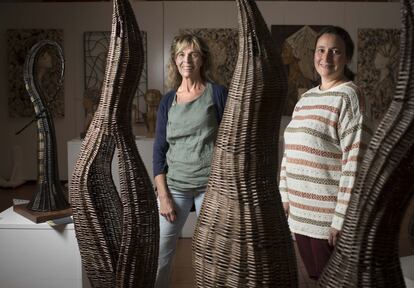
Although the Cuatro Torres skyscrapers in the financial area of Madrid are still visible from the towns nearest to the capital, their inhabitants are celebrating their escape from the metropolis. The satisfaction of these former city dwellers with their new lives sends a message of hope to those areas still struggling to keep their populations. “We are mothers of small children and we can take them to school by bicycle,” says Ana Lázaro, a member of the Bailanderas cooperative. “It’s a very pleasant lifestyle that would be very difficult in Madrid.”
The Madrid Nuevo Norte revolution
As Europe's largest urban regeneration project, Madrid Nuevo Norte will, without doubt, have an impact on the Sierra Norte. And while it is still hard to tell what shape that will take, developers Distrito Castellana Norte (DCN) have been meeting with the mayors of the area to prep them.
Approved in September, the private government-backed project involves the construction of 10,500 new homes, green zones, offices and the highest skyscrapers in Spain. DCN predicts that it will generate 118,000 jobs over a period of 23 years. Once finished, it is estimated a further 130,598 new jobs will be created.
According to the DCN, the Sierra Norte will benefit from improved communications, including improved roads and a better interurban bus service as well as the construction of two new bus stations.
English version by Heather Galloway.

